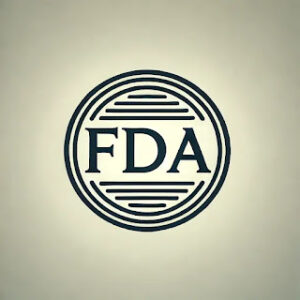FDA Issues Revised Draft Guidance on Addressing Misinformation About Medical Devices and Prescription Drugs

Introduction
In today’s digital age, the rapid spread of misinformation about medical devices and prescription drugs poses significant risks to public health. To address this, the FDA has released an updated draft guidance titled “Addressing Misinformation About Medical Devices and Prescription Drugs: Questions and Answers.” This new guidance provides recommendations for companies on how to counter inaccurate information, particularly online content produced by independent sources.
Summary of the Document
Type of Guidance
Draft Guidance
Meaning of Draft Guidance
This document is currently open for feedback and is not yet finalized. It represents the FDA’s perspective on this important issue and encourages input from stakeholders.
Release Date
July 2024
Action Requested
Comments and suggestions regarding this draft document should be submitted within 60 days of publication in the Federal Register. Electronic comments can be submitted to Regulations.gov, and written comments to the Dockets Management Staff at the FDA.
Scope
The guidance focuses on combating misinformation related to approved or cleared medical products. This includes human medical devices, prescription drugs for humans, and prescription drugs for animals. It specifically applies to companies responsible for the labeling of these products, ensuring that information disseminated to the public is accurate and reliable. The guidance also addresses misinformation spread through various internet-based platforms such as social media, podcasts, emails, and other online channels. By targeting these areas, the FDA aims to enhance public health and safety by ensuring that consumers receive trustworthy information about medical products.
Key Definitions
Key definitions covered in the guidance include:
- Misinformation: Implicit or explicit false, inaccurate, or misleading representations of fact about or related to the firm’s approved/cleared medical product. This includes false, inaccurate, or misleading representations of fact about approved or unapproved uses, instructions/directions for use, attributes of the product, scientific information, and omissions of material facts.
- Firms: Persons or entities legally responsible for the labeling of approved/cleared medical products, which includes applicants, sponsors, manufacturers, packers, distributors, and any persons communicating on behalf of these entities.
- Medical Product: A medical device for human use (including one that is a biological product), a prescription human drug (including one that is a biological product), or a prescription animal drug.
- Approved/Cleared Medical Products: Medical products that may be introduced into interstate commerce for at least one use under the FDA Authorities as a result of having satisfied applicable premarket requirements. This includes products permitted via PMA, 510(k), De Novo classification, or HDE pathways.
- Internet-based: Information available through the internet, including social media, podcasts, email, group messaging, and discussion forums.
- Independent Third Party: A person or entity that, in communicating about a firm’s approved/cleared medical product, is not acting on behalf of that firm.
Overview
The guidance provides detailed advice on how companies can combat misinformation. It introduces the concept of “tailored responsive communications,” which are online messages that firms can use to directly address specific instances of misinformation. These communications should be truthful, accurate, scientifically valid, directly relevant, and limited to essential information. Additionally, companies need to include disclosures such as how to access FDA-mandated labeling and the date of the communication. If the misinformation implies an unapproved use, the message should clarify that the safety and efficacy for such use have not been proven.
Examples of misinformation addressed in the guidance include false claims about drug effects, inaccurate instructions on using medical devices, and misleading statements about a product’s safety or effectiveness. This draft guidance, once finalized, will provide a comprehensive framework for ensuring effective communication about medical devices and prescription drugs. Stakeholders are encouraged to review the document and provide their comments to help shape the final version.
Frequently Asked Questions (FAQ)
To provide clarity on the guidance, here are answers to some common questions:
- Q1: What is the enforcement policy for tailored responsive communications?
The enforcement policy applies when companies address misinformation about their products in internet-based communications created by independent third parties. It does not include TV or radio ads.
- Q2: Can companies address misinformation in other ways?
Yes, companies can use promotional communications and other existing avenues to address misinformation, provided they comply with FDA requirements.
- Q3: What should be included in a tailored responsive communication?
Communications should be truthful, scientifically sound, directly relevant to the misinformation, and include necessary disclosures, such as FDA-required labeling and the date of communication.
- Q4: How should companies identify misinformation?
Companies should clearly identify the specific misinformation and the independent third-party communication where it appears, including details like the date and location of the post.
- Q5: Are there limitations on addressing misinformation about unapproved uses?
Yes, the enforcement policy is limited to addressing misinformation created by independent third parties suggesting unapproved uses. Companies should include a statement that the unapproved use has not been established as safe or effective.
- Q6: Is the enforcement policy limited to the same internet-based setting where the misinformation appears?
No, companies can share their tailored responsive communication in different or additional internet-based settings, and it would still fall within the enforcement policy outlined in this guidance.
- Q7: What operational and presentational considerations should companies take into account?
The FDA recommends prioritizing current and widely spread misinformation, and ensuring the complete and clear presentation of information, considering the limitations and controls of different internet-based settings.
- Q8: Can companies address misinformation through other existing avenues?
Yes, companies can use general medical product communications, including sales aids, TV and radio advertisements, and help-seeking and institutional communications, to address misinformation. These communications must comply with all applicable FDA requirements.


